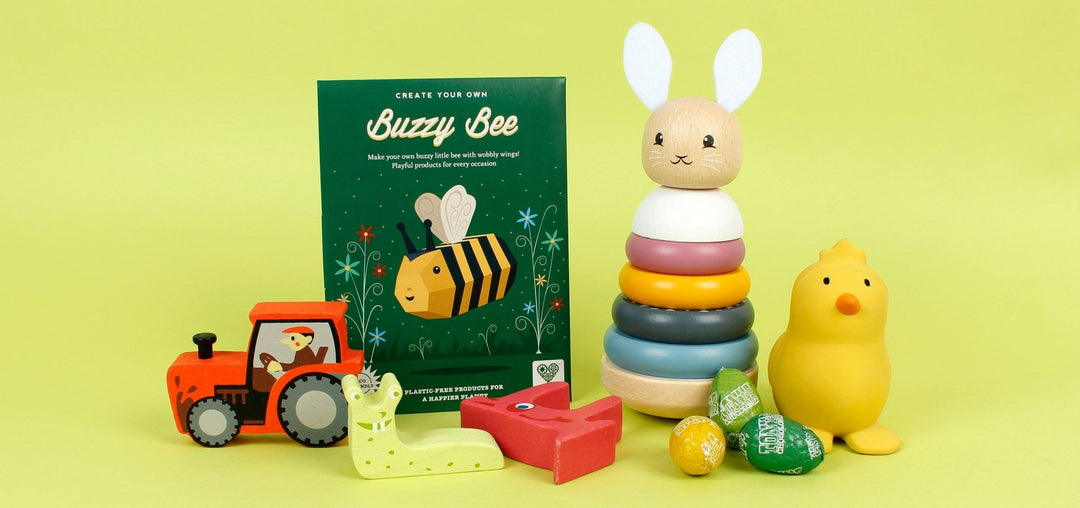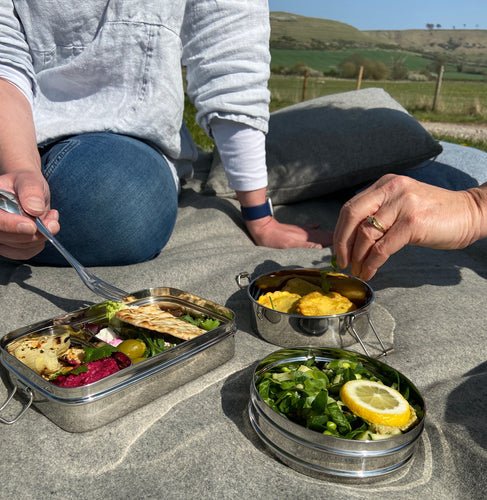Which is more sustainable? Organic or recycled cotton?
A Slice of Green has recently swapped its reusable cotton produce bags over to be made from recycled cotton instead of organically grown cotton.
Why did it do that?
A famous (to us !) Maya Angelou quote says "Do the best you can until you know better. Then when you know better, do better".

At Green Tulip, we believe in looking for improvements. When we have a more sustainable option, we don't just sit back and accept that as the final solution. We keep informed of any developments in sustainability, particularly with the use of materials, energy and waste reduction. And when we see there are change we can make to be more sustainable, we set about starting to make them. We like to work with brands that feel exactly the same way.
The A Slice of Green produce bags are a perfect example.
Organic cotton is a better option than none organically grown cotton, both for the environment and the farmers, as no pesticides or insecticides are used. But it's an imperfect solution as cotton is a very thirsty crop and cotton farms are not very biologically diverse. With climate change, floods and droughts are becoming more common, making it harder to farm crops that rely on a large amount of land and irrigation * (see below)
So A Slice of Green looked for a solution. By approaching their cotton bag manufacturer - a small family run business in Tamil Nadu, India, and asking if they could investigate using recycled cotton in a way that they could manage the change and make the products more sustainable.
The end result is the new recycled cotton produce bags that are made from:
Scraps of fabrics that are discarded during the manufacturing process are collected and turned back into fibres ready to be reused in the production of new products. Since the recycling process weakens the cotton, it is necessary to use other fibres for strength. A Slice of Green recycled cotton contains 80% recycled fibre and 20% virgin cotton, ensuring it is plastic-free.
The material is certified by Global Recycled Standard (GRS) whose aim is to:
- Reduce the harmful impact of production on people and the environment.
- Provide assurance that products are processed in a more climate-friendly way.
- Encourage higher proportions of recycled content in products.
That is where we are now, and we will keep looking for ways to improve the environmental impact of our products to do better!
We have just introduced new organic cotton baby wipes, muslins, facial pads and tissues. It might see like a contradiction, to use organic cotton for these items, but as the organically grown cotton is softer and we think babies are likely to chew and suck on anything near them, they will stay as organically grown. Organic cotton is also more suitable for those with sensitive skin.
* Facts & figures for those like me who like to have supporting evidence!
Organic cotton farming:
What is organic cotton and why is it better for the environment?
The Soil Association say:
Non-organic cotton has been dubbed the ‘world’s dirtiest crop’, but the story is very different for organic cotton.
Organic farming works in harmony with nature. Farmers make the most of natural systems and cycles to grow their crops and it all starts with the soil! By looking after the world beneath our feet, farmers are able to grow healthy and resilient crops. Using techniques like crop rotation, green manures and composting, healthy soils lead to healthy harvests. And because toxic hazardous pesticides and artificial fertilisers are banned, biodiversity is boosted and natural forms of pest control are used instead.
Organic cotton:
- Combats climate change.
- Saves and protects precious water.
- Helps farmers feed their families.
- Gives control to farmers not GM companies.
- Eliminates hazardous synthetic pesticides.
Read how and why at the Soil Association website, but in general organic cotton produces 94% less greenhouse gas emissions.
Recycled Cotton:
Cotton recycling is an ecological textile production method. It conserves resources, reduces waste, and doesn't involve harmful substances. The process significantly saves water, energy, and carbon dioxide emissions. The regenerated material is also natural, bio-based, biodegradable, compostable, and recyclable.
Cotton can be recycled using old garments or textile leftovers and recycling cotton prevents additional textile waste. It is often weaker after the recycling process and may have a % of virgin cotton to improve strength.
Using recycled cotton reduces carbon emissions by 80% compared to using conventional virgin cotton.
Research shows that using 1000kg of recycled cotton yarn can save 0.5 hectares of land, C02 emissions are reduced by 6600 kg, and 2783 cubic meters of irrigation water are saved.¹ Source: Could the recycled yarns substitute for the virgin cotton yarns: a comparative LCA
Check out our new range of recycled cotton produce bags here.
Recycled Steel
And we recently introduced recycled steel insulated drinks bottles from Qwetch - the Active Range. Incorporating 90% recycled stainless steel.
Recycled stainless steel is an important step towards a more eco-design. Choosing recycled stainless steel allows to considerably reduce the environmental impact of the raw material’s manufacturing process.
By avoiding the impact of the extraction, mineral transport, and the energy consumption required to produce virgin material, carbon emissions from stainless steel manufacturing are reduced by 58%. (SIRSA estimate, based on Qwetch’s 2020 Carbon Footprint)
We hope you found this useful, please let us know if you are interested in more details!
Kate




